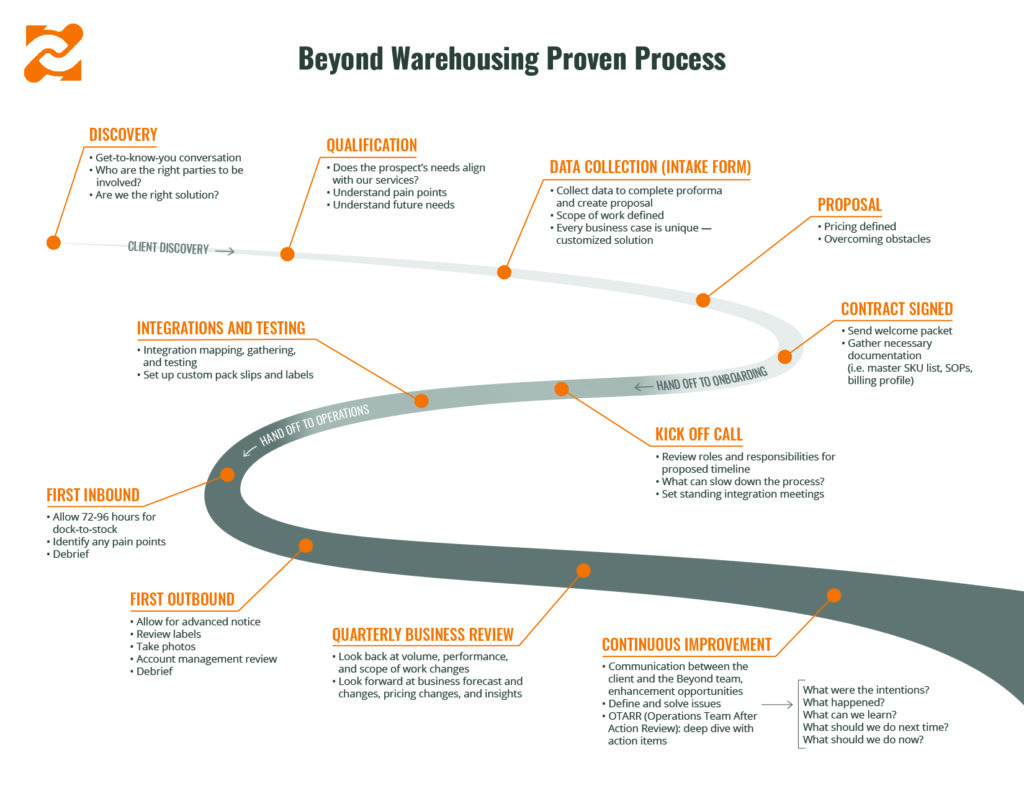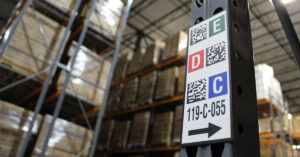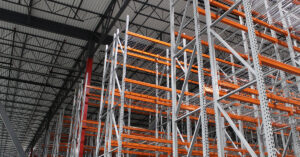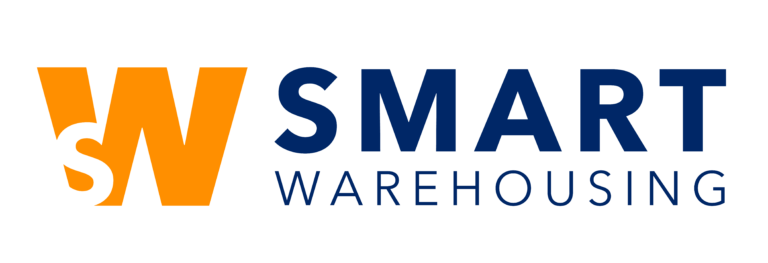Beyond Warehousing's Proven Process – Client Accounts

Steps in the Proven Process
- Get-to-know-you conversation
- Who are the right parties to be involved?
- Are we the right solution?
- Does the prospect’s needs align with our services?
- Understand pain points
- Understand future needs
- Collect data to complete proforma and create proposal
- Scope of work defined
- Every business case is unique — customized solution
- Pricing defined
- Overcoming obstacles
- Send welcome packet
- Gather necessary documentation (i.e. master SKU list, SOPs, billing profile)
- Review roles and responsibilities for proposed timeline
- What can slow down the process?
- Set standing integration meetings
- Integration mapping, gathering, and testing
- Set up custom pack slips and labels
- Allow 72-96 hours for dock-to-stock
- Identify any pain points
- Debrief
- Allow for advanced notice
- Review labels
- Take photos
- Account management review
- Debrief
- Look back at volume, performance, and scope of work changes
- Look forward at business forecast and changes, pricing changes, and insights
- Communication between the client and the Beyond team, enhancement opportunities
- Define and solve issues
- OTARR (Operations Team After Action Review): deep dive with action items
- What were the intentions?
- What happened?
- What can we learn?
- What should we do next time?
- What should we do now?
Want to hear from us?
Questions?
Recent Blog Posts

The Role of Ambient Storage in 3PL Warehousing
Unlike specialized storage solutions, ambient warehousing offers the flexibility to accommodate a wide range of goods, from dry food products to electronics, without the need for costly climate control systems. What is Ambient Storage? Ambient storage refers to the storage of products in a non-

An Overview of 3PL Warehouse Services
Projected to hit $1.31 trillion by 2024, the growth of the global third-party logistics (3PL) market reflects a significant shift in how businesses handle warehousing and fulfillment complexities. Navigating the modern supply chain landscape requires a strategic approach, and for many businesses, this involves the

3PL Pricing: Understanding Warehousing and Fulfillment Costs
In the world of business procurement, the search for the best value is a common goal; to make the right choices from the beginning, avoid regrets, and ensure long-term success with vendors.However, when it comes to the complex realm of 3PL pricing, it is common


